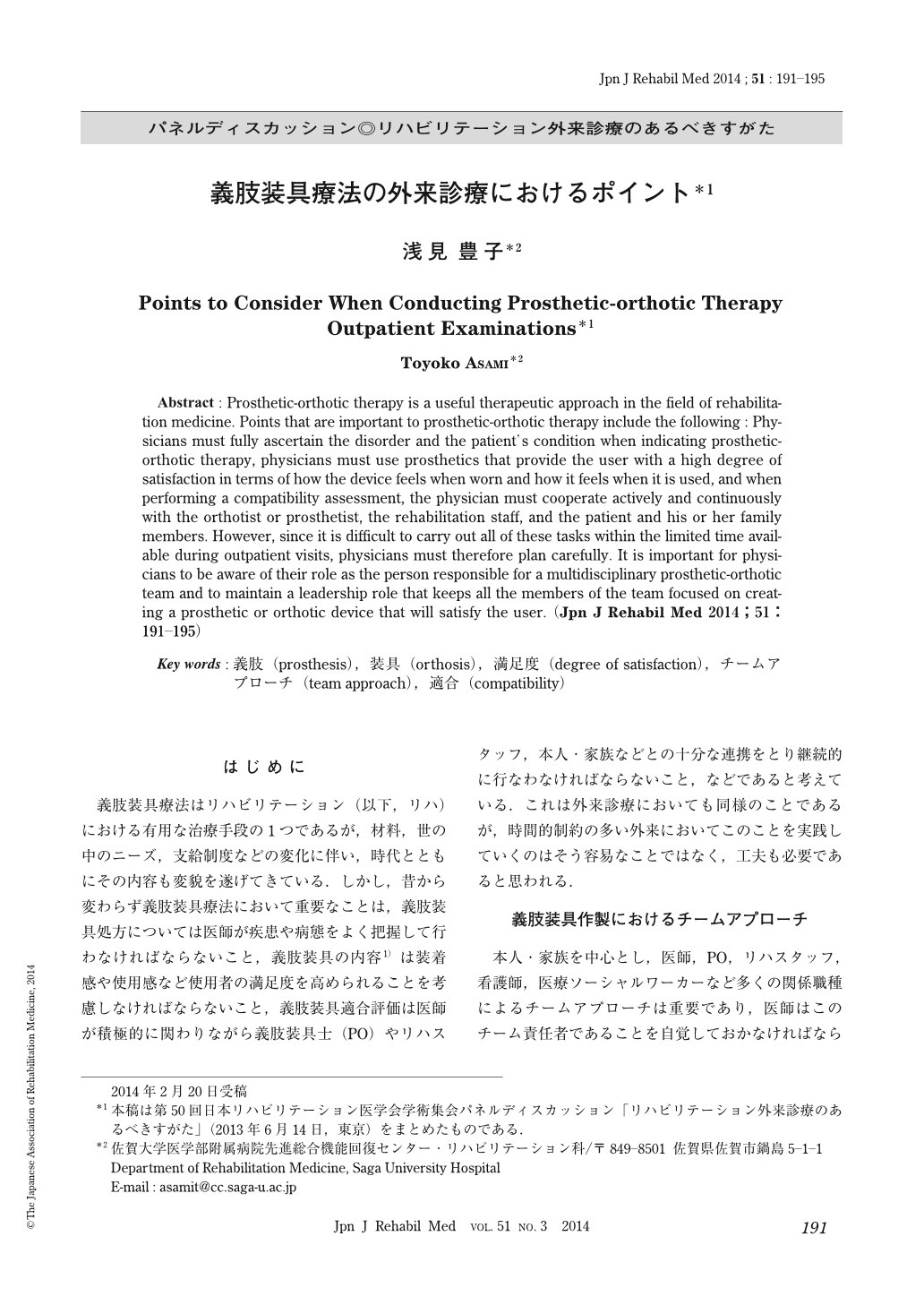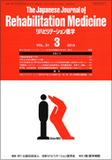Japanese
English
- 販売していません
- Abstract 文献概要
- 1ページ目 Look Inside
- 参考文献 Reference
はじめに
義肢装具療法はリハビリテーション(以下,リハ)における有用な治療手段の1つであるが,材料,世の中のニーズ,支給制度などの変化に伴い,時代とともにその内容も変貌を遂げてきている.しかし,昔から変わらず義肢装具療法において重要なことは,義肢装具処方については医師が疾患や病態をよく把握して行わなければならないこと,義肢装具の内容1)は装着感や使用感など使用者の満足度を高められることを考慮しなければならないこと,義肢装具適合評価は医師が積極的に関わりながら義肢装具士(PO)やリハスタッフ,本人・家族などとの十分な連携をとり継続的に行なわなければならないこと,などであると考えている.これは外来診療においても同様のことであるが,時間的制約の多い外来においてこのことを実践していくのはそう容易なことではなく,工夫も必要であると思われる.
Abstract : Prosthetic-orthotic therapy is a useful therapeutic approach in the field of rehabilitation medicine. Points that are important to prosthetic-orthotic therapy include the following : Physicians must fully ascertain the disorder and the patient's condition when indicating prosthetic-orthotic therapy, physicians must use prosthetics that provide the user with a high degree of satisfaction in terms of how the device feels when worn and how it feels when it is used, and when performing a compatibility assessment, the physician must cooperate actively and continuously with the orthotist or prosthetist, the rehabilitation staff, and the patient and his or her family members. However, since it is difficult to carry out all of these tasks within the limited time available during outpatient visits, physicians must therefore plan carefully. It is important for physicians to be aware of their role as the person responsible for a multidisciplinary prosthetic-orthotic team and to maintain a leadership role that keeps all the members of the team focused on creating a prosthetic or orthotic device that will satisfy the user.

Copyright © 2014, The Japanese Association of Rehabilitation Medicine. All rights reserved.


